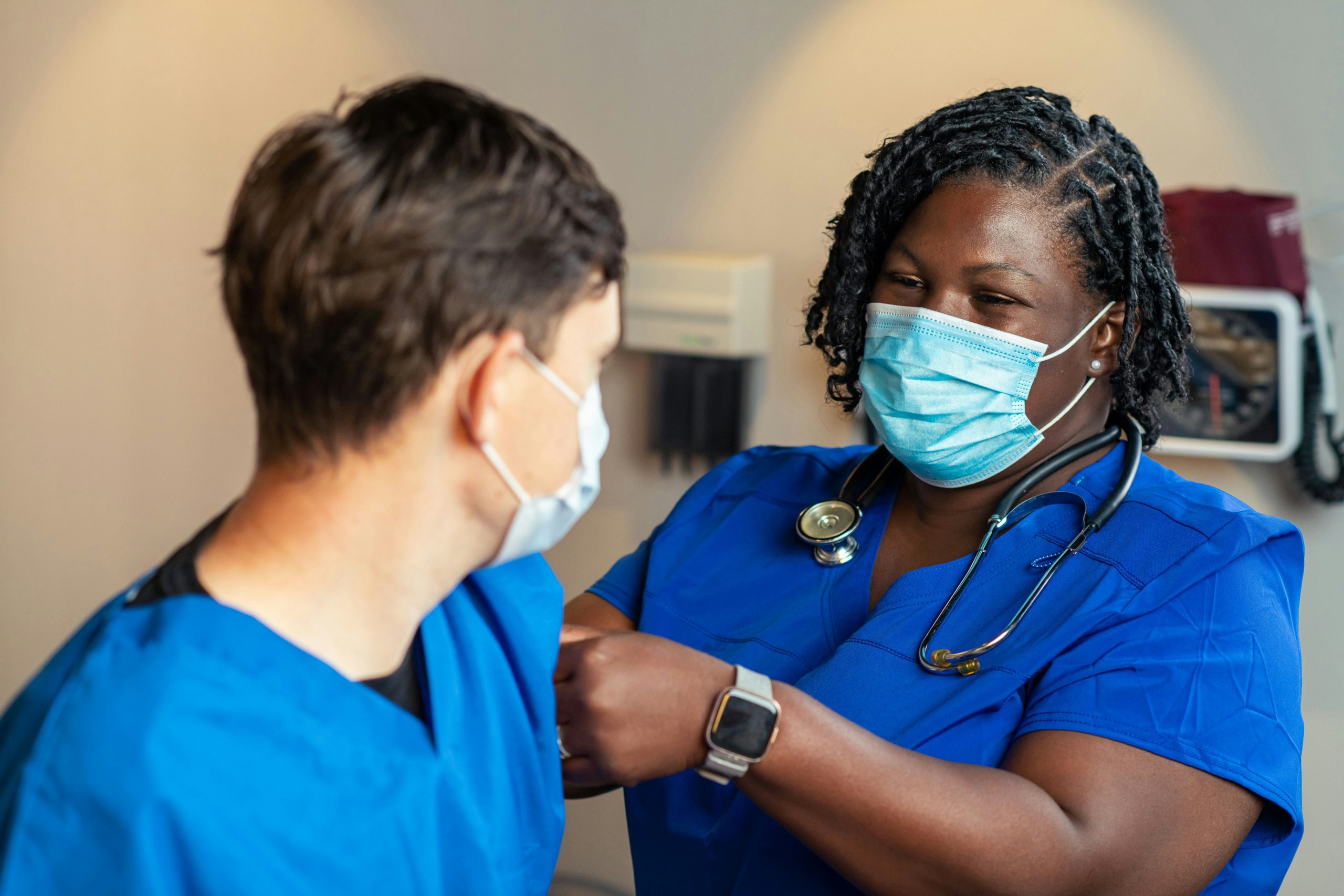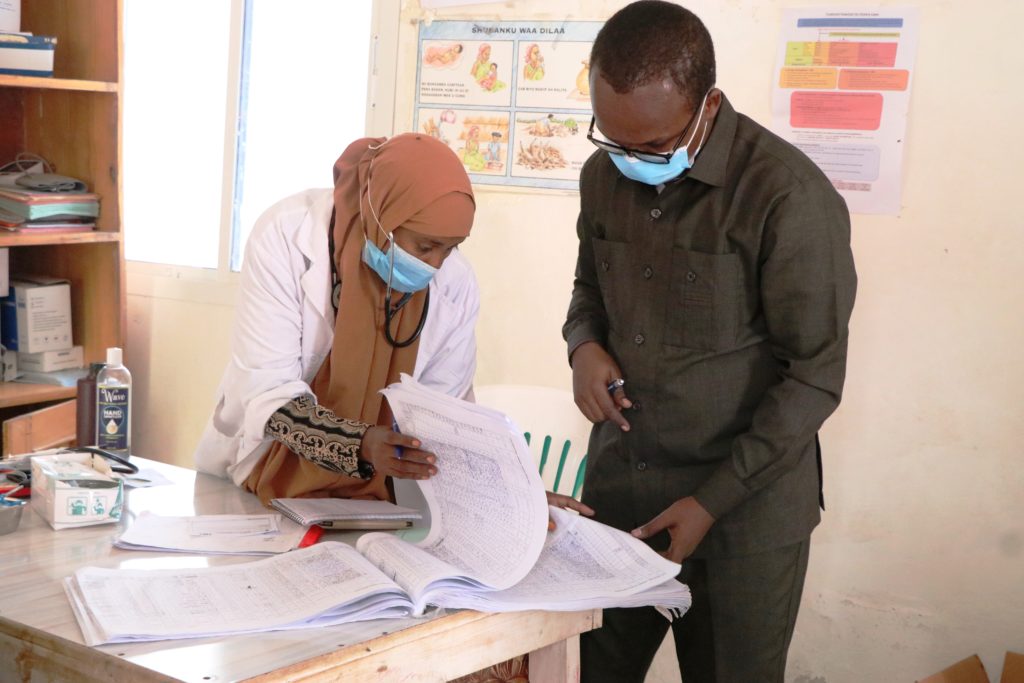Training, innovation, and empowerment: How to close the global nursing gap

Credit: Unsplash/Center for Disease Control (CDC)
The world needs nearly 5 million new nurses and midwives to tackle a shortfall that leads to high turnover, lower-quality care, and potentially dangerous hospital conditions. Filling that gap requires investment and innovation
By Mariel Ferragamo
Mamie Preston had known her whole life that she wanted to be a nurse. She grew up playing nurse as a child. Her mother was a nurse in Ethiopia, and all her mother’s friends – Preston’s “aunties,” as she called them – were nurses, too.
“It’s all I’ve ever dreamt of,” said Preston, who now lives in Washington, DC. “Nursing is like second nature to me.”
Right now, Preston’s dream career is in a critical condition as countries across the globe struggle with a severe nursing shortage. According to the World Health Organization (WHO), the world is heading for a shortfall of 4.8 million nurses and midwives by 2030.
The problem is particularly acute in countries in Africa, South-East Asia, and parts of the Eastern Mediterranean and Latin America. According to WHO’s first State of the World’s Nursing study published in 2020, almost 90% of that shortage is concentrated in low- and lower middle-income countries (LMICs).
That is partly due to the “brain drain” of nurses being recruited from LMICs as higher-income countries and regions such as the United States, Canada, and Europe try to fill the gaps in their own healthcare workforces. Research shows one in eight nurses practices in a different country from where they were born or trained.
Preston moved from Ethiopia to the U.S. when she was young, before she started her nursing training. But she said she sees the same problems in both places: nursing staff who are chronically overworked and undersupported.
Those issues have recently been in the spotlight thanks to the breakout U.S. TV medical drama The Pitt. Each episode follows one hour of a 15-hour shift at a fictional Pittsburgh trauma hospital, shadowing the doctors and nurses as they respond to one crisis after the next.
The show, which has just ended its first season in the U.S., has been drawing in audiences and earning praise from nurses for its honest and accurate portrayal of the challenges they face every day. It brings attention to the many reasons that healthcare facilities are struggling to recruit and retain nurses, showing the impact of not only low pay and the burden of understaffing but also the persistent threat of violent attacks by patients.
Jacqueline Newsome-Williams, a former colleague of Preston’s who now works as the Nursing Education Specialist on the DC Board of Nursing and has her own practice, said she has seen and experienced various kinds of violence, even death threats and attempted murder.
She said violence against nurses is on the rise due to socioeconomic factors such as increases in alcohol and substance abuse and the financial hit on households from the cost-of-living crisis.
“When I was working in the field, a few times a week we would be faced with someone dangerous, either verbally or physically,” Newsome-Williams said. She and her colleagues often had to walk in groups to their cars after their shifts, in fear for their safety.
High financial and personal costs
Even without the threat of violence, the strain that nursing shortages put on healthcare staff can be dangerous and, at worst, deadly.
Research shows that in hospitals with high patient-to-nurse ratios, nurses are more likely to experience burnout and dissatisfaction with work and make more errors, while patients face longer wait times, and higher mortality and failure-to-rescue rates.
Finding a solution is complicated, but many researchers and those working in healthcare agree that investment is key, not only in the form of funding but also training, rethinking care models, and empowering nurses in the decision-making process.
WHO estimates that it could take the equivalent of at least $10 for every person worldwide each year to avert the global shortage in the next 10 years. As conflict, climate change, and vaccine hesitancy fuel the spread of diseases around the world – such as the recent measles outbreak in the U.S., the rise of mpox in various African countries, and the cholera upsurge in several regions – ensuring nurses everywhere have the tools they need to serve their populations is more crucial than ever.
Newsome-Williams advocates for more investment in paraprofessional programs that focus on boosting resources such as employing and training more nursing assistants or introducing technological innovations to streamline a hospital’s workflow.
“The healthcare industry has not historically always been able to truly capture and address all of the needs of the individuals and constituency of patients,” she said. “One of the things that I am seeing since I’ve been [in the field] is an increase in the need for these paraprofessional programs.”
In the 2023 report Reimagining the Nursing Workload, researchers for McKinsey & Company point to the amount of time nurses spend turning and repositioning patients as a prime example of the potential for tech solutions to improve working conditions.
“This task could be optimized through innovative ‘smart’ hospital-bed technology, including bed-exit alarms, advanced therapy for redistributing pressure, integrated scales and measurements, and remote information on patient conditions,” the report said.
Listening to what nurses need
Both Newsome-Williams and Preston are heavily involved in mentoring and education to recruit nurses and other healthcare-related roles. Preston said this type of support is generally lacking back home in Ethiopia, where education and training for nurses can be hit or miss. “When you find good nurses, they’re really, really good,” she said, “but there are definite gaps where poor training can leave others in the lurch.”
Standardizing the elements of effective nursing can help – for example by following some version of what’s known as the “nursing process”, a comprehensive framework covering the five core practices of nursing care: patient assessment, diagnosis, outcomes and planning, implementation, and evaluation.
Studies show that following the nursing process generally improves quality of care, but few countries manage to implement the framework consistently.
Better representation for nurses in the healthcare sector could be one solution. As leaders in their field, Preston and Newsome-Williams are outliers. Women make up about 70% of the global health workforce, and of those, nearly 90% are nurses – yet women hold only about 25% of leadership positions in the sector.
WHO has found that when countries “enable nurses to take a leadership role, for example by having a government chief nursing officer (or equivalent) and nursing leadership programs, conditions for nurses improve.”
Both Preston and Newsome-Williams believe that shaping the next generation of nurses is one of the most important ways to tackle the shortage.
Through mentoring and recruiting, “young nurses can see that there are opportunities for them to participate and become integral to the healthcare arena,” Newsome-Williams said. “We need to reach out and tap those individuals early.”


